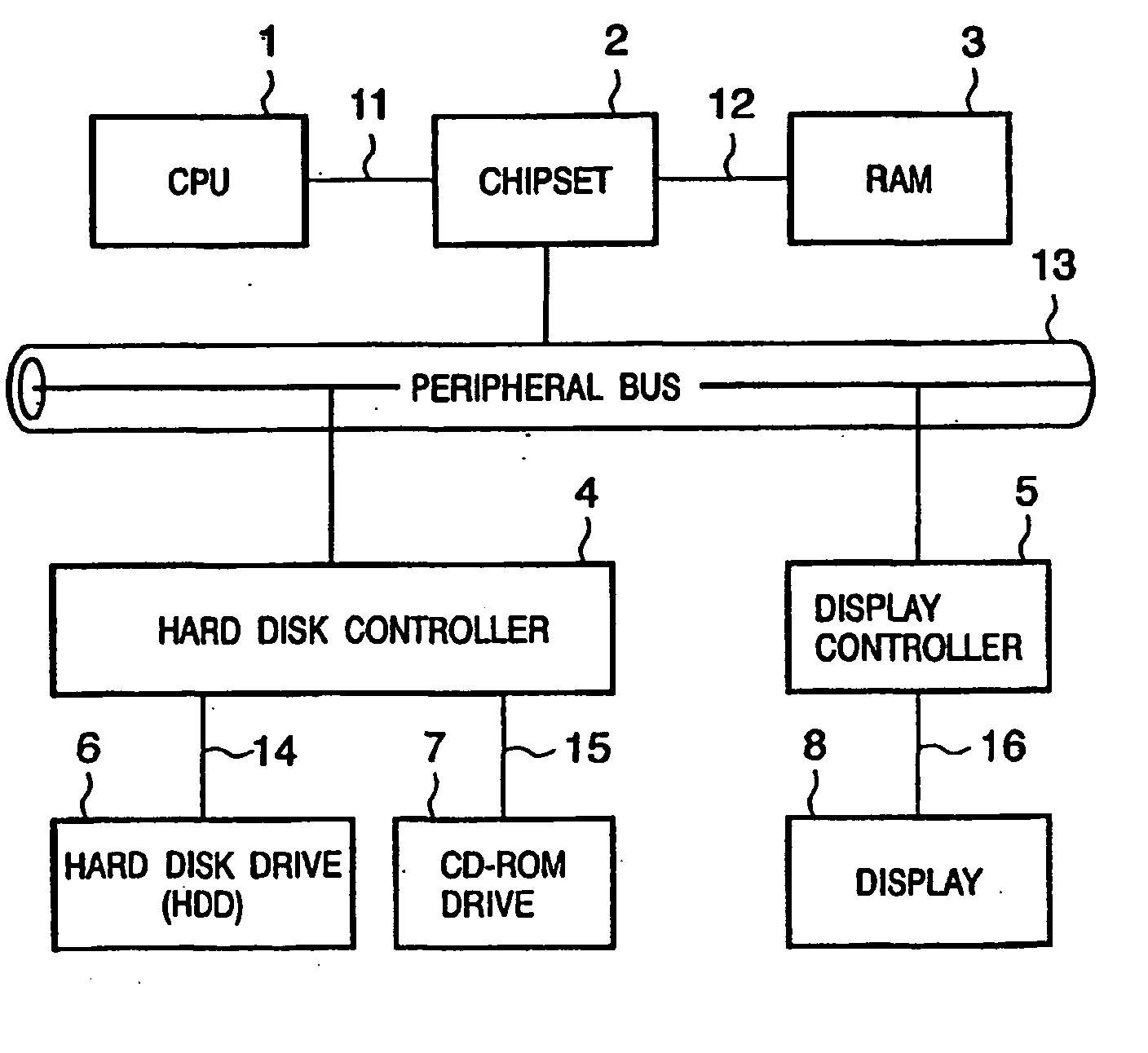Method, program, and storage medium for acquiring logs
a technology for acquiring logs and processing logs, applied in the field of processing log acquisition technology, can solve the problems of large number of man-hours for analyzing logs, heavy work load for acquiring process logs, and difficulty in obtaining chronological logs of entire software processing, so as to reduce the number of man-hours
- Summary
- Abstract
- Description
- Claims
- Application Information
AI Technical Summary
Benefits of technology
Problems solved by technology
Method used
Image
Examples
first embodiment
[0053] [First Embodiment]
[0054] In a first embodiment, an import function or virtual address table contained in memory, which is an arrangement for calling a function in a module from another module, is used to hook and log function calls between modules, thereby enabling a chronological log of an entire software program to be acquired without any modifications to the software modules. The first embodiment will be described below in detail.
[0055] System Configuration
[0056]FIG. 1 shows a configuration of a computer (software evaluation system) performing a log acquisition method according to embodiments of the present invention. For simplicity, it is assumed herein that the software evaluation system is built within a single personal computer. However, the features of the log acquisition method of the present invention is effective whether the system is built in a single PC or a plurality of PCs as a network system.
[0057] The computer in which the software evaluation system is pro...
second embodiment
[0080] [Second Embodiment]
[0081] A second embodiment will be described in which an unexported function such as a callback function is obtained as a log.
[0082]FIG. 10 shows an example of the functions that are used in the software evaluation system according to a second embodiment and of which parameters cannot be obtained with a conventional function definition.
[0083] As callback functions, four (for example) kinds of callback functions, FuncInternal1, FuncInternal 2, FuncInternal3 and FuncInternal 4 are defined. The first parameter dwKind of the GetFuncPointer function indicates the pointer of one of the four kinds of callback functions that is passed to the second parameter lpBuf. The GetFuncPointer function treats lpBuf as the address of FuncInternal1 if the first parameter is 0, or as the address of FuncInternal2 if the first parameter is 1, or as the address of FuncInternal3 if the first parameter is 2, or as the address of FuncInternal4 if the first parameter is 3. If the Ge...
third embodiment
[0092] [Third Embodiment]
[0093]FIG. 14 shows an example of the functions that are used in the software evaluation system according to a third embodiment and of which parameters cannot be obtained with a conventional function definition.
[0094] Three structures STRUCTKIND1, STRUCTKIND2, and STRUCTKIND3 are defined. The first parameter dwKind of the FuncGetData function should indicate the pointer of one of the three structures that is passed to the second parameter lpBuf. The FuncGetData function treats lpBuf as the pointer to STRUCTKIND1 if the first parameter is 1, or as the pointer to STRUCTKIND2 if the first parameter is 2, or as the pointer to STRUICTKIND3 if the first parameter is 3. If the FuncGetData were defined with a conventional function definition, lpBuf would be a void-type pointer and consequently no data can be obtained.
[0095]FIG. 15 shows how memory is used by each of the structures STRUCTKIND1, STRUCTKIND2, and STRUCTKIND3.
[0096] The STRUCTKIND1 (330) has a member...
PUM
 Login to View More
Login to View More Abstract
Description
Claims
Application Information
 Login to View More
Login to View More - R&D
- Intellectual Property
- Life Sciences
- Materials
- Tech Scout
- Unparalleled Data Quality
- Higher Quality Content
- 60% Fewer Hallucinations
Browse by: Latest US Patents, China's latest patents, Technical Efficacy Thesaurus, Application Domain, Technology Topic, Popular Technical Reports.
© 2025 PatSnap. All rights reserved.Legal|Privacy policy|Modern Slavery Act Transparency Statement|Sitemap|About US| Contact US: help@patsnap.com



